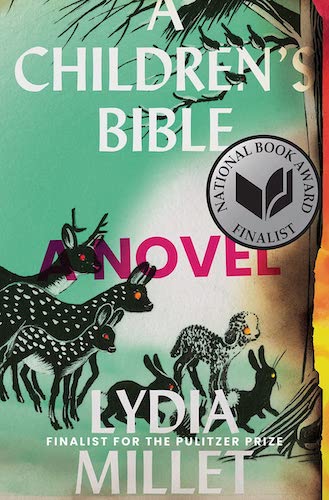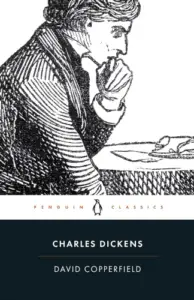A Children’s Bible
Book Author: Lydia Millet
Summary reviewed by:
Terrence Timmons
Terrence Timmons
Analyst
Bachelor of Arts (BA), University Of California, Santa Barbara 2019
With over 4 years of experience as an analyst. Terrence Timmons is committed to analyzing summaries without compromising on quality.
A Children’s Bible: Summary
In A Children’s Bible, Lydia Millet crafts a haunting narrative of environmental collapse, as seen through the eyes of disillusioned youth. The story unfolds in a dilapidated mansion where a group of privileged families retreats for a summer vacation. While the adults indulge in hedonistic excess, their children, led by the sharp and cynical Evie, become increasingly estranged. Disgusted by their parents' apathy and denial of the growing ecological disasters outside their insular world, the children decide to abandon their elders and face the looming apocalypse on their own.
Set against a backdrop of societal collapse and natural disasters, Millet’s novel explores the generational divide and the ways in which the younger generation bears the brunt of their elders' failures. As the children venture into a world unraveling at the seams, they grapple with their loss of innocence and the burden of survival in a broken world. The story, though speculative in nature, holds a mirror to our current reality, forcing readers to confront the consequences of inaction.
This standalone novel is a sharp commentary on environmental neglect, societal decay, and the precarious future left to the youth. It is not only a cautionary tale but also a poignant exploration of the resilience and resourcefulness of children in the face of adult irresponsibility.
Spoilers (click here to reveal spoilers)
A Children’s Bible: Genres
Fiction
Literary Fiction
Climate Fiction
Dystopian Fiction
Coming-of-Age
Allegorical Fiction
A Children’s Bible: Main Characters
Evie: A perceptive and disillusioned teenager, Evie is the de facto leader of the group of children. She is driven by a deep cynicism towards the adults’ disregard for the environment and their children’s future. When she notices the growing environmental disasters, she takes charge, leading the children away from the oblivious adults.
Jack: Evie’s younger brother, Jack is more innocent but highly observant. He carries a cherished Bible given to him by a friend, which he interprets in his own way. His innocence contrasts with the harsh realities around him, and his faith offers a form of solace to the group.
Shel: A pragmatic and resourceful teen, Shel acts as Evie’s closest confidant. She values survival above all and often makes difficult decisions that reflect her realistic understanding of their dire situation. Her quick thinking is crucial when the group faces threats from both nature and other people.
The Parents: The adults are largely nameless, representing a collective failure of the older generation. They are hedonistic, irresponsible, and in denial about the environmental collapse unfolding around them. Their neglect drives the children to abandon them in search of their own path.
A Children’s Bible: Themes
Environmental Collapse: The novel explores the devastating effects of climate change and environmental neglect. The worsening natural disasters serve as a stark backdrop, highlighting the urgent need for action in the real world.
Generational Divide: There is a sharp contrast between the adults’ apathy and the children’s urgency. The younger generation, symbolized by Evie and her peers, is left to deal with the consequences of their elders’ actions, underscoring the theme of generational responsibility.
Loss of Innocence: As the children are forced to confront the harsh realities of their world, they quickly lose their innocence. The journey away from their parents marks a coming-of-age in the most brutal sense, as they must learn to survive in a collapsing world.
Survival and Resilience: The novel showcases the children’s resilience in the face of unimaginable challenges. Despite their youth, they display a remarkable ability to adapt, survive, and support each other in a world where the adults have failed them.
A Children’s Bible: What You Need to Know
(Contains Spoilers: Perfect for readers seeking a quick review.)
The Children’s Bible begins with a group of wealthy families vacationing in a decaying mansion, where the adults indulge in their vices while their children are left largely unsupervised. The story is told primarily from the perspective of Evie, a teenager who quickly grows disillusioned with the adults' irresponsibility. The mansion, once a symbol of their wealth, becomes a decaying relic as the world outside begins to fall apart due to environmental disasters.
Evie and the other children, including her younger brother Jack, become increasingly aware of the severity of the crisis outside. Jack, who carries a Bible given to him by a friend, interprets its stories in his own way, providing a symbolic lens through which the children view their crumbling world. The children, led by Evie and her close friend Shel, decide to abandon the mansion and the adults, seeking safety elsewhere.
Their journey takes them through a world devastated by climate change, where they encounter both the physical destruction of the environment and the moral decay of society. They find temporary refuge in a dilapidated farmhouse, but it is clear that the world has changed irrevocably. The children are forced to make difficult decisions to survive, and their journey is marked by the loss of innocence and the harsh realities of their situation.
As the novel progresses, the group faces increasing dangers, both from the natural world and from other survivors. The adults’ negligence becomes a stark contrast to the children's resourcefulness and determination. By the end of the novel, the children's fate remains uncertain. They have found temporary shelter, but the overwhelming sense of an impending catastrophe lingers, with the story closing on an ambiguous and unsettling note.
The novel is a powerful commentary on the consequences of environmental neglect and the burden placed on the younger generation to survive and rebuild in the aftermath of their parents' failures. It is a chilling reminder of the future that awaits if humanity does not take immediate and drastic action to address the environmental crisis.
A Children’s Bible: Methodology
Our approach combines expert analysis with a focus on what matters most to you, the reader. We distill the essence of each book, emphasizing key themes like environmental collapse, generational responsibility, and survival, ensuring the summary reflects the author’s intent. Through rigorous review, we maintain quality and integrity, presenting a concise, accurate portrayal that captures the book’s core without compromising on detail. Our summaries not only inform but also resonate, bridging the gap between the story’s message and real-world relevance, making each one a valuable resource for understanding and reflection.


A Children’s Bible
Date Published: May 12, 2020
Disclaimer: As an Amazon Associate I earn from qualifying purchases.




